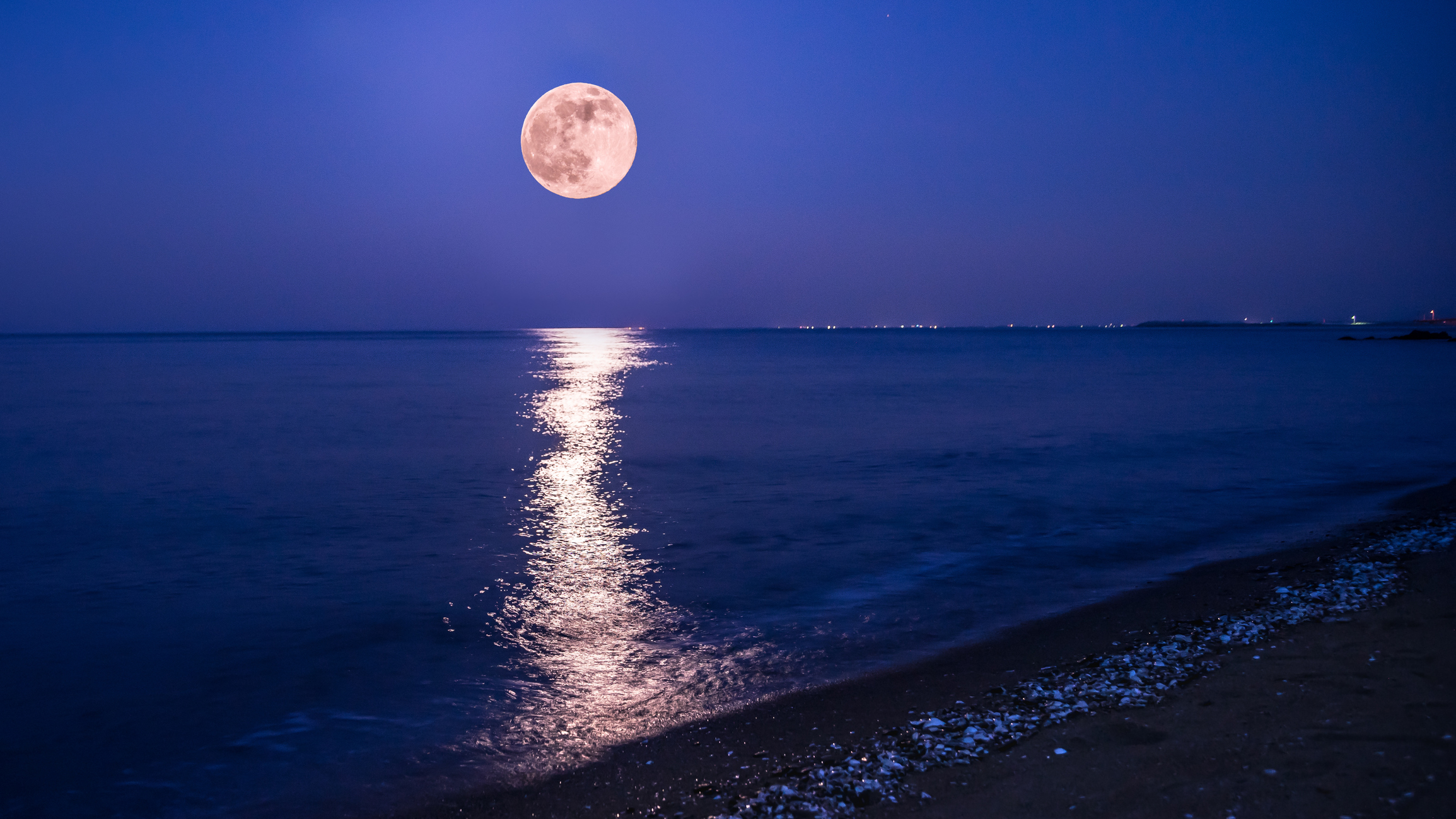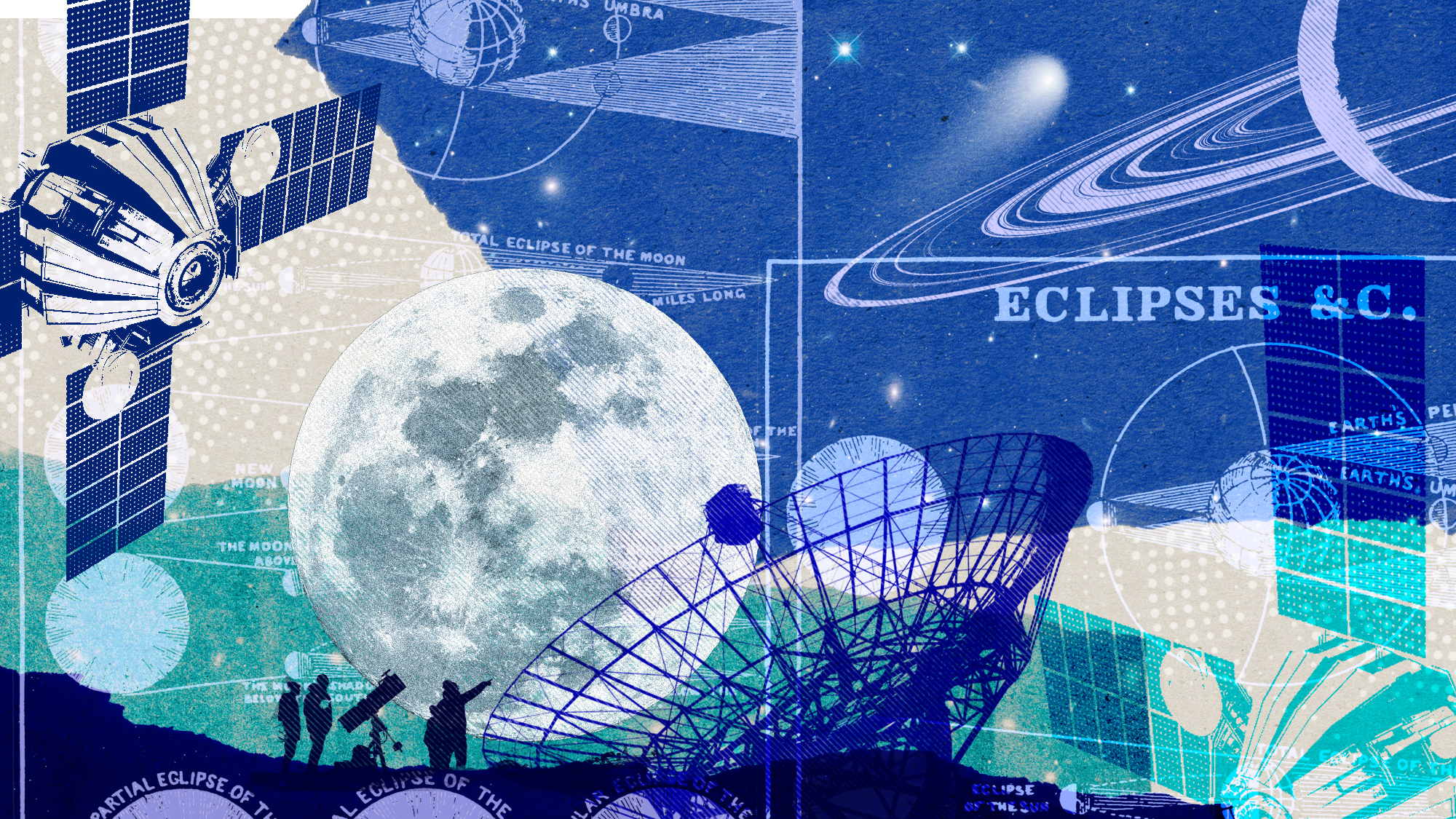How to see Wednesday's 'pink moon'


April's "pink moon" will make its annual reappearance on Wednesday night, but it won't be pink like the name suggests. Rather, the moniker is simply in reference to the herb "moss pink," which blooms in spring, NASA explains. Other names for the phenomenon include "Sprouting Grass Moon, the Egg Moon, and among coastal tribes, the Fish Moon, as this was when the shad swam upstream to spawn."
The orb will reach peak illumination just after midnight on Thursday morning and will mark the first full moon of spring. It will be visible in both the Northern and Southern hemispheres and can also be seen toward the east on Wednesday evening and toward the west before sunrise on Thursday morning, according to EarthSky.
The full moon "presents a special opportunity to see a beautiful moon and start looking at the moon as it goes through its phases," Dr. Noah Petro, chief of NASA's planetary geology, geophysics, and geochemistry lab, told CNN. "I encourage people to dust off their binoculars or telescopes to look closely at the moon, try to see the different colors (the light and dark regions), and recognize that those differences reflect different compositions of rock." He added: "When people look at the moon, I want them to think of not just of it as a nearby neighbor in space, but of the moon being like the eighth continent of the Earth."
The Week
Escape your echo chamber. Get the facts behind the news, plus analysis from multiple perspectives.

Sign up for The Week's Free Newsletters
From our morning news briefing to a weekly Good News Newsletter, get the best of The Week delivered directly to your inbox.
From our morning news briefing to a weekly Good News Newsletter, get the best of The Week delivered directly to your inbox.
To really get in on the fun, NASA suggests onlookers don "suitably celebratory celestial attire," as well as "enjoy the spring flowers, consider acts of charity, be welcoming and leave an extra seat at the table, and avoid starting any wars."
A free daily email with the biggest news stories of the day – and the best features from TheWeek.com
Devika Rao has worked as a staff writer at The Week since 2022, covering science, the environment, climate and business. She previously worked as a policy associate for a nonprofit organization advocating for environmental action from a business perspective.
-
 Wilde Cambridge: home-away-from-home in a prime city spot
Wilde Cambridge: home-away-from-home in a prime city spotThe Week Recommends This laid-back aparthotel is the perfect base for a weekend of exploring
-
 The best alcohol-free alternatives for Dry January
The best alcohol-free alternatives for Dry JanuaryThe Week Recommends Whether emerging from a boozy Christmas, or seeking a change in 2026, here are some of the best non-alcoholic beers, wines and spirits to enjoy
-
 A lemon-shaped exoplanet is squeezing what we know about planet formation
A lemon-shaped exoplanet is squeezing what we know about planet formationUnder the radar It may be made from a former star
-
 A lemon-shaped exoplanet is squeezing what we know about planet formation
A lemon-shaped exoplanet is squeezing what we know about planet formationUnder the radar It may be made from a former star
-
 The 5 biggest astronomy stories of 2025
The 5 biggest astronomy stories of 2025In the spotlight From moons, to comets, to pop stars in orbit
-
 Blue Origin launches Mars probes in NASA debut
Blue Origin launches Mars probes in NASA debutSpeed Read The New Glenn rocket is carrying small twin spacecraft toward Mars as part of NASA’s Escapade mission
-
 ‘The Big Crunch’: why science is divided over the future of the universe
‘The Big Crunch’: why science is divided over the future of the universeThe Explainer New study upends the prevailing theory about dark matter and says it is weakening
-
 Dinosaurs were thriving before asteroid, study finds
Dinosaurs were thriving before asteroid, study findsSpeed Read The dinosaurs would not have gone extinct if not for the asteroid
-
 The moon is rusting
The moon is rustingUnder the radar The Earth is likely to blame
-
 Panspermia: the theory that life was sent to Earth by aliens
Panspermia: the theory that life was sent to Earth by aliensUnder The Radar New findings have resurfaced an old, controversial idea
-
 Africa could become the next frontier for space programs
Africa could become the next frontier for space programsThe Explainer China and the US are both working on space applications for Africa
